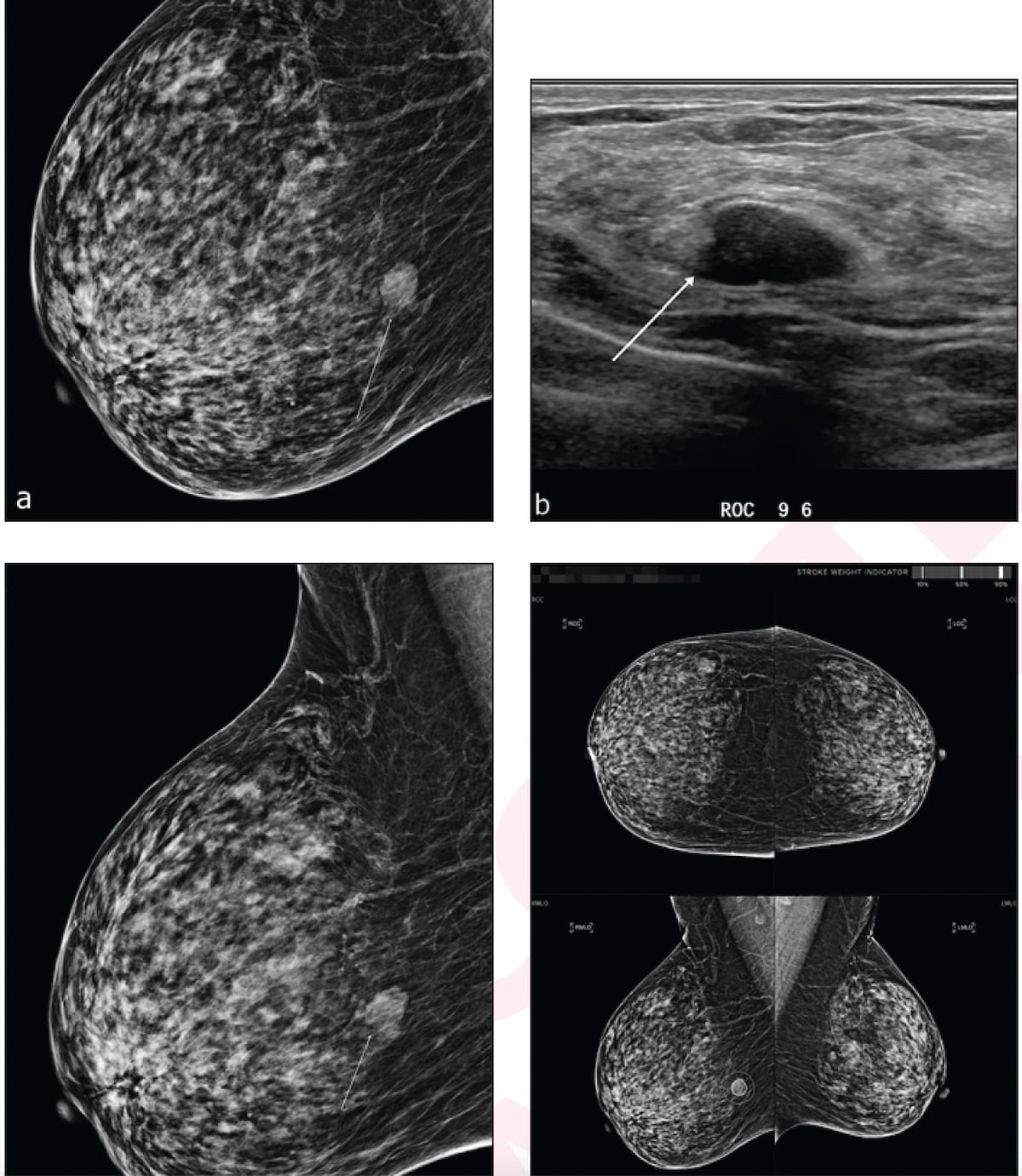Researchers Note Lack of Benefit with AI in Women with Dense Breasts
In a study of over 1.300 women with dense breasts, the combination of mammography and ultrasound had a recall rate of 11.7 percent, a specificity rate of 89.1 percent and an accuracy rate of 89.2 percent in comparison to a 21.4 percent recall rate, 79.4 percent specificity and 79.5 percent accuracy for the combination of mammography, ultrasound, and artificial intelligence (AI).
Adjunctive use of an artificial intelligence (AI) model, trained and validated on over 170,000 mammography exams, had significantly lower accuracy and specificity, and a higher recall rate in comparison to a combination of mammography and supplemental ultrasound, according to a new study of women with dense breasts.
For the retrospective study, recently published in the American Journal of Roentgenology, researchers compared mammography, stand-alone AI and ultrasound in 1,325 women (mean age of 53) with dense breasts. The study authors also compared the combination of mammography and AI to the combination of mammography and ultrasound and the combination of AI, mammography, and ultrasound.
While stand-alone AI demonstrated a higher cancer detection rate (CDR) (6.8) than mammography (6.0) and ultrasound (6.0), researchers found that it had the highest recall rate and lowest sensitivity and specificity of the three modalities.
In a study of 1,325 women with dense breasts, researchers found the mammography/ultrasound/AI combination had the highest recall rate (21.4 percent) in comparison to mammography/AI (14.9 percent) and mammography/ultrasound (11.7 percent). The mammography/ultrasound/AI combination also had the lowest specificity rate (79.4 percent) in comparison to mammography/AI (85.8 percent) and mammography/ultrasound (89.1 percent). (Images courtesy of the American Journal of Roientgenology.)

Specifically, stand-alone AI had an 11.9 percent recall rate in comparison to 4.4 percent for mammography and 9.2 percent for ultrasound. The study authors noted the sensitivity rate for stand-alone AI was 88.7 percent in comparison to 96.2 percent for mammography and 91.3 percent for ultrasound. Mammography had the highest specificity rate at 96.2 percent followed by 91.3 percent for ultrasound and 88.7 percent for stand-alone AI.
“Screening mammography alone, in comparison with stand-alone AI, screening ultrasound alone, mammography with AI, and mammography with ultrasound, showed significantly higher specificity and accuracy, with significantly lower recall rate and no significant difference in CDR or sensitivity,” wrote study co-author Hee Jung Moon, M.D., who is affiliated with the Department of Radiology at Wonju Severance Christian Hospital and the Yonsei University Wonju College of Medicine in Wonju, Korea, and colleagues.
The researchers also noted that the combination of mammography and supplemental ultrasound had the same sensitivity (100 percent) as the combination of mammography, AI, and ultrasound. The mammography/ultrasound/AI combination had the highest recall rate (21.4 percent) in comparison to mammography/AI (14.9 percent) and mammography/ultrasound (11.7 percent). The mammography/ultrasound/AI combination also had the lowest specificity rate (79.4 percent) in comparison to mammography/AI (85.8 percent) and mammography/ultrasound (89.1 percent).
“The present findings fail to show benefit of AI with respect to screening mammography performed with supplementary breast ultrasound in patients with dense breasts,” noted Moon and colleagues.
Emerging AI Algorithm Shows Promise for Abbreviated Breast MRI in Multicenter Study
April 25th 2025An artificial intelligence algorithm for dynamic contrast-enhanced breast MRI offered a 93.9 percent AUC for breast cancer detection, and a 92.3 percent sensitivity in BI-RADS 3 cases, according to new research presented at the Society for Breast Imaging (SBI) conference.
Could AI-Powered Abbreviated MRI Reinvent Detection for Structural Abnormalities of the Knee?
April 24th 2025Employing deep learning image reconstruction, parallel imaging and multi-slice acceleration in a sub-five-minute 3T knee MRI, researchers noted 100 percent sensitivity and 99 percent specificity for anterior cruciate ligament (ACL) tears.
What is the Best Use of AI in CT Lung Cancer Screening?
April 18th 2025In comparison to radiologist assessment, the use of AI to pre-screen patients with low-dose CT lung cancer screening provided a 12 percent reduction in mean interpretation time with a slight increase in specificity and a slight decrease in the recall rate, according to new research.